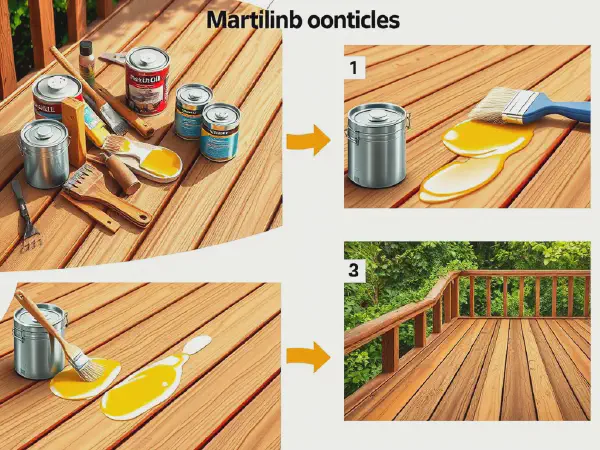Your Ultimate Decking Oil Application Guide: Step-by-Step Instructions

Decking Oil Application: A Complete Guide
Decking Oil Application is essential for maintaining the beauty and longevity of wooden decks. Proper application not only enhances the appearance of the wood but also protects it from the elements such as UV rays, moisture, and fungi. A well-maintained deck can significantly improve the aesthetic appeal of your outdoor space and increase the overall value of your property.
When considering Decking Oil Application, it is important to choose the right type of oil suitable for your specific decking material. There are different formulations available, including penetrating oils, film-forming oils, and semi-transparent stains. Each type has its own unique features and benefits, allowing you to select the best option for your needs. Proper application will help ensure that your deck remains weather-resistant and vibrant for years to come.
The process of Decking Oil Application involves careful preparation, application, and regular maintenance. Preparing the deck by cleaning and repairing any damages is crucial before applying the oil. During the application phase, it’s advisable to follow a systematic approach for even coverage, and post-application, your deck will require monitoring to ensure it remains in good condition. Paying attention to these details will lead to a more successful decking project.
Furthermore, regular maintenance, such as cleaning and re-oiling as needed, will enhance the longevity of your deck. With the right approach, you can avoid common mistakes that many homeowners make during the oiling process, ensuring the best outcome and enjoyment of your outdoor space.
In conclusion, understanding the nuances of Decking Oil Application can dramatically impact the appearance and lifespan of your wooden deck. By investing time in selecting the right oil, preparing the surface, applying correctly, and maintaining regularly, you can protect your deck investment and enjoy your outdoor area for many years.
Choosing the Right Decking Oil
There are several types of decking oils available, each suited for different wood types and conditions. Some of the more common options include natural oils, synthetic oils, and water-based products. Natural oils, like Teak or Tung oil, provide a rich finish and deep penetration, while synthetic options often offer greater durability. Water-based products tend to be easier to clean up and less harmful to the environment than their solvent-based counterparts.
When selecting decking oil, consider factors such as wood type, climate, UV exposure, and desired finish. Also, if the deck will be subjected to heavy use or moisture, opt for a more resilient product. Test a small area first to determine compatibility with your wood and desired aesthetic.
Environmental impact is also an important consideration. Many decking oils are now formulated to be more eco-friendly, using fewer volatile organic compounds (VOCs) and sustainable ingredients. Researching and selecting products with environmental certifications can contribute positively to the ecosystem.
Preparing Your Deck for Oil Application
Before applying decking oil, it is essential to clean the deck surface thoroughly. Remove dirt, grime, mold, and mildew using a suitable deck cleaner or a mixture of water and vinegar. Power washing can also be effective, but ensure that the wood isn’t damaged in the process and allow ample time for the wood to dry completely before application.
Next, inspect the deck for any damaged areas and repair them accordingly. This may involve sanding rough spots, replacing broken boards, or filling in cracks. Addressing these issues prior to applying oil will ensure a smoother finish and prolong the life of your deck.
Choosing the right weather conditions for applying decking oil is crucial. Ideally, application should be done on a dry day with mild temperatures to allow proper absorption and drying. Avoid applying in direct sunlight or when rain is expected within 24 hours.
Step-by-Step Application Process
Gather the tools needed for the application process. Typically, you’ll need a paintbrush or roller, a paint tray, drop cloths, and possibly a sprayer if you're working on a larger deck. Ensure that all tools are clean and suitable for use with the chosen decking oil.
For even application, start at one edge of the deck and work your way systematically across. Apply the oil in small sections, ensuring an even coat. If using a brush, work with the grain of the wood, and avoid heavy application that can lead to pooling.
After application, allow the deck sufficient time to dry and cure. Follow the manufacturer’s recommendations for drying time, which typically ranges from a few hours to a full day. Avoid heavy foot traffic on the surface during this period to ensure the oil sets properly.
Maintaining Your Deck After Oil Application
Routine maintenance is key to preserving the appearance and longevity of your deck. Regularly sweep away debris and clean stains as they arise. Use a soft brush or cloth to avoid scratching the surface and ensure a long-lasting finish.
Signs that your deck may need re-oiling include fading color, water no longer beading on the surface, and visible wear or damage to the finish. Monitoring the deck regularly will help you decide when it’s time to reapply oil.
To extend the life of your decking oil, consider applying a maintenance coat every year or two, depending on exposure to the elements and foot traffic. This will refresh the protective layer without requiring complete stripping and re-application.
Common Mistakes to Avoid
One common mistake is the over-application of oil, which can lead to sticky surfaces and uneven drying. Always adhere to the manufacturer’s recommendations for coverage per square foot and avoid applying excess product to prevent waste and complications in finish.
Ignoring weather recommendations is another misstep. Factors like humidity and temperature directly affect the application and drying of the oil. Always check weather forecasts and choose a suitable time for application.
Finally, neglecting surface preparation can have detrimental effects on the final appearance and longevity of the deck. Ensure thorough cleaning and repairs are made before oil application to achieve the best results.
